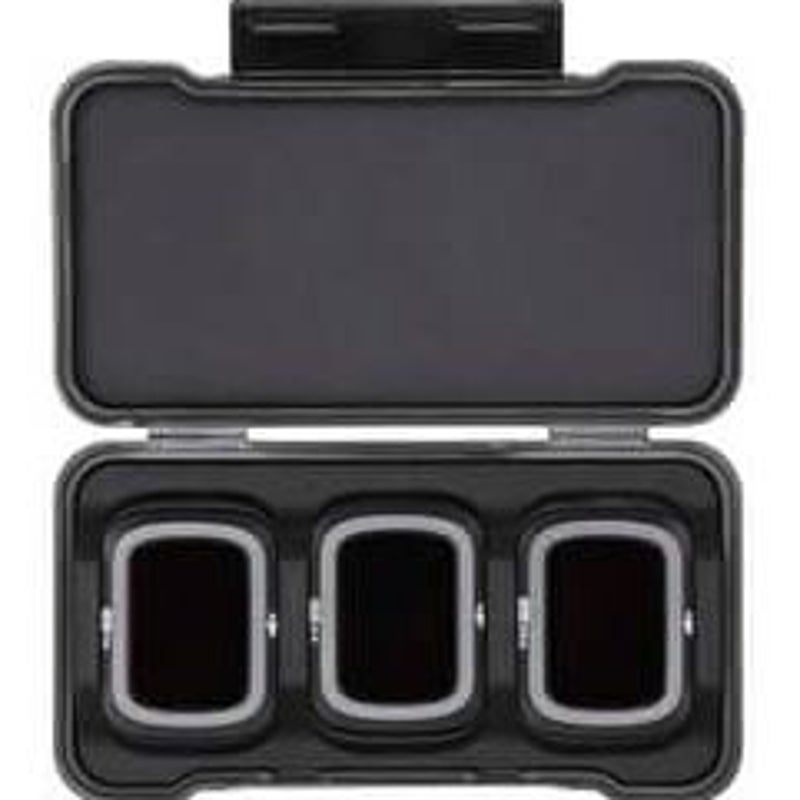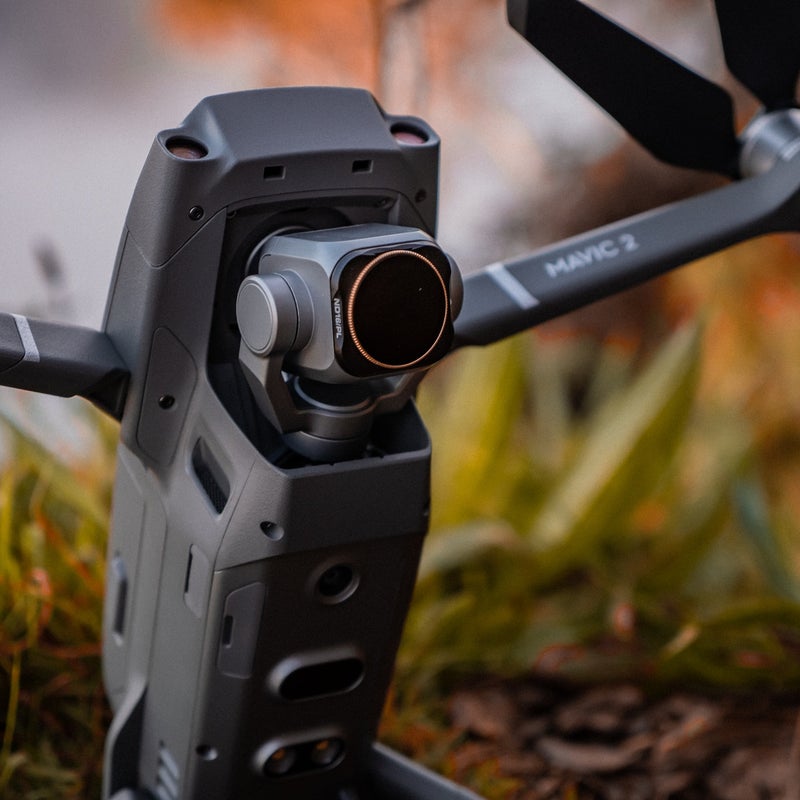Nowadays drones have become really popular and easily accessible to everyone, with their prices dropping every year for the starter packages.

I am sure that at some point we all have come across that small black case that contains the filters ( yes now many manufacturers actually include a standard set in the combo pack) and felt really excited.
Only until we used them and figured out that either we cant use them or that there is no difference at all.
So lets take a quick look, in what occasions these can help you produce better footage or take better still shots.
ND filters are simply like sunglasses for your drone's camera. Putting one on means that the amount of light that reaches the camera is less. This has as a result that you will have to compensate for the less light. You can do that by either lowering the shutter speed or lowering your apperture.
Now you can use that in you advantage to get creative. Lower the shutter speed to make things with motion appear a bit blurred and give the sense of motion. You can lower you aperture to create the desired depth of field for your photo/video.
Now you will notice that each filter comes with a number, like ND4 or ND6 and so on. This, plainly is the indicator of how ''dark'' the filter is. Depending on the lighting conditions you can choose the one that blocks as much light as you like, in order to achieve the shot you want.
Above you can see a simple table to guide you when to use each filter. There are also other kind of filters such as CPL (circular polarizer filter) that we will talk specifically in other post.
Here you can see shutter speed change that need to be done according to which filter you are using. Have in mind that this depends on the maker and the materials that they use. The differences might be small between brands, but it is something you should consider. Charts like this can be found at the manufacturers site or in the box with the filters.
Now you are gonna be wondering which one to get. For the majority of the cases the simple set with ND4,8,16,32 that usually comes with the drone are more than enough and the quality is on point. If you are looking for something more special there is always other brand alternatives like PolarPro.
SO put your glasses on and fly safe.







Add comment
Comments